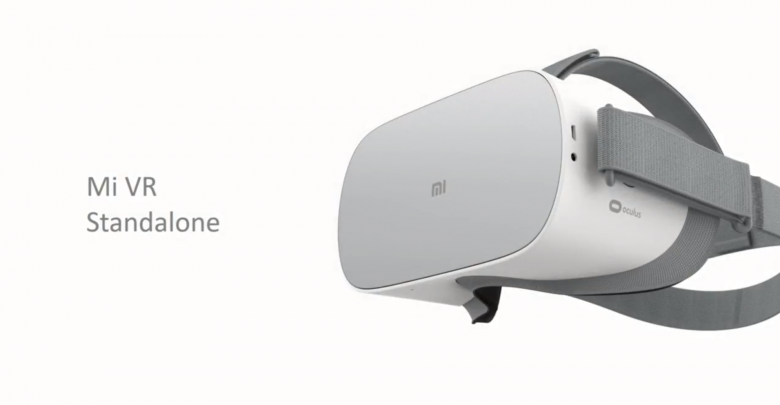
Virtual reality glasses, as Xiaomi imagines

It only took him 4 minutes to catch them all.

contents show
Introductory
Xiaomi has so far made VR, or virtual reality goggles, but they were relatively simple pieces. Each had to be put into a phone so they were able to fly us into virtual reality. Their best glasses were similar to the Samsung Gear VR, meaning they added the simplest glasses with so much that they got their own motion sensor, not using their phone, thus reducing latency. This is because this is one of the most confusing features of these glasses, as we move our heads the image is out of sync, always a little late. Not much, but just to cause a little nausea in those who are sensitive to it, and not to have a perfect illusion.
For this problem, major manufacturers offer glasses that are connected by cables to the computers that serve them. This has two advantages. One is that we get much better graphics, the other is that the slip between motion and image is almost imperceptible. In the meantime, of course, it turns out that this solution is quite expensive, and most users don’t even have a chance to get such a set, so development has started in another direction as well. The result, for example, was Oculus Go. These glasses essentially got a built-in phone that lacks the phone function, but the display has a higher-than-average resolution.
Oculus Go and Xiaomi Mi VR Standalone are the twins
Once upon a time, where a nam was, a surgeon surpassed the operative tegger, who was called, more precisely today, Hugo Barra. Well, this Hugo is a handsome Brazilian guy who worked at Xiaomi until early 2017. It was then that he had some small health problems that caused him to say goodbye to the company, even though he held a very serious position. He was vice president of Xiaomi International, the company responsible for Xiaomi’s expansion abroad, so he was also part of the glorious conquest of India, for example.

Then little Hugo's tummy didn't hurt so much anymore, and he started missing work again. Well no, he was really complaining that he missed his family and the life he had built in Silicon Valley, which he said had already affected his health. Because of this, he then resigned and went to nail bits to a workshop in Silicon Valley. This workshop was called Facebook, or to be completely accurate its VR section was the new employer and what does God do, Hugo became vice president here as well.

Who knows what series of coincidences it took for Oculus and Xiaomi to start working together. Let’s say based on the antecedents, chance didn’t play much of a role here, but in fact, the collaboration started, resulting in the Xiaomi Mi VR Standalone… which happens to be exactly the same as the Oculus Go.
Hardware
Well, as you may have read above, the new generation of discounted glasses essentially have a built-in phone. And if that’s the case, then, as with phones, we start by introducing the central unit.

The soul of the structure is a Qualcomm Snapdragon 821 chip. This is a relatively old stuff, sometime in the fall of 2016. After birth, he cried okay and spun all four Kyro cores of the built-in processor. Back then, the Snapdragon 821 was a premium product and is now built into virtual glasses. It could still be good there. Of course, it wasn’t a bad chip, with a processor maximum clock speed of 2,15 GHz and a built-in Adreno 530, the GPU is also a pretty strong piece with its 653 MHz clock. The built-in RAM is 4 GB and the storage capacity is 32 or 64 GB, depending on the configuration.

The "Fast-Switch" display built into the glasses can't be called crazy in terms of resolution, but I wouldn't call 2K, i.e. 2560 x 1440 pixels, bad either. With this, you can already use VR glasses, you don't have to look at the pixel grid on the display. The image refresh rate of the panel is 72 Hz, which is a very decent rate, but this is necessary so that the image does not wash out even during fast movements, and the delay remains low. The display is connected to the optics, in which we find Fresnel lenses, and which in these glasses have 101 degrees see through. This is not too much, not too little, perhaps we feel a little less that we are looking at the world through diving goggles than with cheap phone plug-in glasses. What we haven't talked about yet is the battery. In this case, it has a capacity of 2600 mAh, which seems low, but it's not that much.
Of course, the glasses also come with a controller, which is just like the controllers that come with such VR stuff. There is a round touchpad at the top and two buttons at the bottom. Okay, you don't have to complicate this, VR games aren't complicated either, that's enough for everything.
Conclusion
Unfortunately, I didn’t have the stomach to translate the marketing duma, the point is so much, wow, but these glasses are damn good. That’s true, let’s say the Oculus Go is also good, and from whatever direction I look at it, it’s nothing more than an Oculus Go with Xiaomi logo. I don’t want to guess what that means, especially if we also add to the formula that Gó has been on the market since last fall. There may have been some kind of collaboration between the companies, but the fact is that Xiaomi had to wait for the Go to start and run out of enough pieces.

Well, that sounds crying so far, though it’s not, it’s just the facts of such stubborn things. I have a hard time separating the two products. But, maybe not. All we need is for Xiaomi to follow the pricing policy here that it is unwilling to make a profit of more than 5 percent, and if that is the case, we have got an Oculus Go cheaper, also known as. To be sure, the presentation and appearance in the online store was followed by quite a lot of interest, as evidenced by the fact that the opening stock ran out in 4 minutes. Never a worse start Xiaomi! Let's be happy!
Here you can buy: Xiaomi VR Standalone virtual reality glasses















